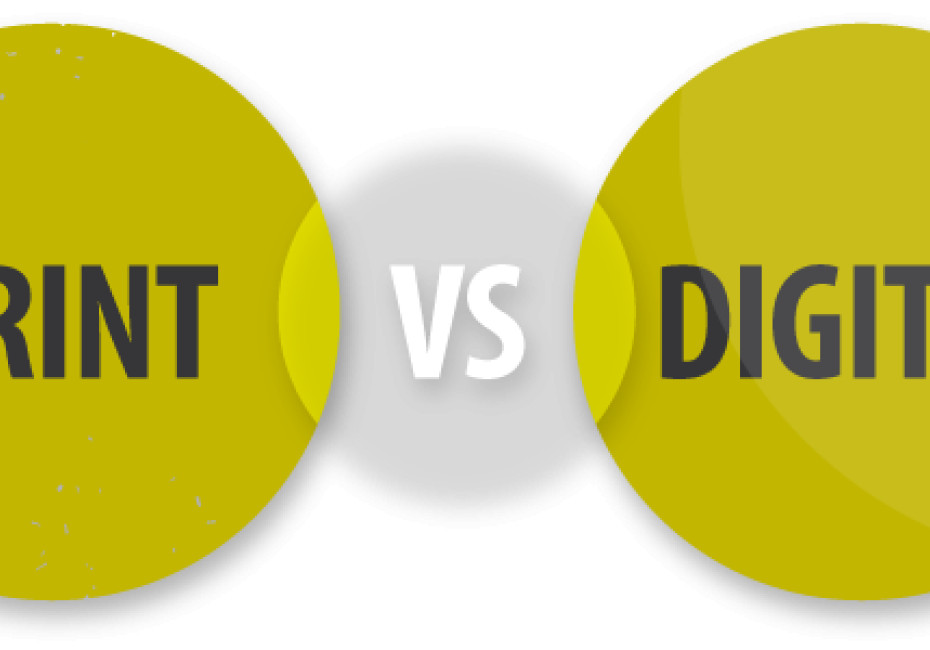Related services
Marketing in today's economy can lead businesses to cast aside costly printed materials and instead opt for a more economical digital approach. However, research tells us that the conversion rate from physical campaigns can be much higher than their online equivalents. So we're looking into the main differences between print and digital marketing, analysing their pros and cons in an attempt to help our clients get the most out of their budget.
Online Marketing
Going digital can often be the cheaper and arguably easier campaign route, sending e-newsletters for example is incredibly simple and relatively inexpensive compared to printing and delivering thousands of leaflets. Once we've set you up with a branded template, future email promotions can be send out without agency help. You can also target different types of customers through email campaigns - not everyone needs to receive the same information as they would with a printed leaflet, instead you can tailor each offer or news update to their interests, age group or location.
As well as being able to personalise adverts, marketing online allows you to gather information from your target audience. Unlike with traditional printed items you can measure who has seen your advert, which offers/products they prefer and even which day of the week they prove most responsive. You can then use this information to improve your future efforts.
So what are the negatives to marketing on-screen? The main downside is simply that email newsletters and online ads are more easily ignored, deleted or marked as spam. The volume of junk mail delivered to your inbox on a daily basis makes it tempting to delete the majority without even a quick browse - if the title doesn't grab you then it's usually a one-way ticket to the trash. In comparison, an advert in a magazine or a flyer through your door requires a certain level of physical interaction in order to ignore a message. Even turning the page over or glancing at an all-you-can-eat leaflet on route to the recycling bin means that you've seen it (even if only for a couple of seconds). If strong enough this message will stick with you.
Offline Marketing
Despite the cost implications of printed marketing, whether it be a volume of leaflets or paying for ad-space in a magazine, hard-copy campaigns still have a higher conversion rate than digital campaigns. This may be largely down to the fact that they are more often-than-not in plain sight of a potential customer and not easily missed. Until your front door comes equipped with an automatic spam folder you're going to get your flyer noticed.
Print also offers a certain amount of flexibility in terms of format when compared to online marketing. For example will your advert take the form of an A4 brochure, pocket-sized die-cut flyer, door hanger or high street billboard? When compared to the limitations of email platforms and fixed-size web banners there is much more scope to personalise an advert to your own individual branding and get creative.
Production costs largely depend on the size, materials and quantities and some can be more economical than others. Although it's still likely to be more than the cost of an email campaign, there is something about a physical piece of collateral that makes your business appear 'real'. After all anyone can send an email, or place an ad on someone else's website, but the fact that you've gone through the effort of actually producing something 'real' resonates a certain confidence and professionalism.
Bridging the gap
What about combining print and digital media? I think most people have come across QR codes on leaflets and adverts and despite their odd appearance, QR codes are a great way to blur the line between offline and online marketing. Now you can get the higher success rates of print marketing with the added instant conversion towards your website. Not only this but you also get the benefit of being able to analyse how successful your printed campaign has been.
The only downside to QR codes in our opinion is how they look, but there are alternatives out there. If you've got a large budget then why not go for some augmented reality?! The reader loads up their app to scan your flyer and hey-presto your flyer bursts into life - taglines become clickable links and characters become animated movies. However, for those with a more modest budget there are SnapTags - these work in the same way as a QR code but give you a few added extra features. Instead of the black and white blocky barcode we can use a full colour graphic - for example your logo. These can be scanned to open a website or even start a conversation and importantly your codes don't date - you can re-use your icon over and over by simply changing the response content.
Making the most of your marketing
There are clear benefits to each route and the combination of the two does seem to bridge the gap nicely but overall it's not the medium that counts - it's what you're saying and who you're saying it to that really matters. Whilst planning your next campaign think about who you want to see your advert, how do they operate? What situation might they be in when they're thinking about your product?
For example, whilst e-mail marketing is inexpensive there's little point if your target market is a certain demographic who are more likely to respond better to a printed leaflet. Likewise though some demographics might not be likely to scan a QR code on said leaflet (you may be surprised which demographics too!). So different markets will lend themselves to different marketing avenues and this is the key.
We've given email marketing tips before (read the article here) but in short there are a few important factors to consider in order to make the most of your email newsletters. Be personal and targeted, be concise and consistent and use analytics to your advantage.
For print marketing, it's essential that your leaflet or flyer stands out. Be bold, engaging and approachable - you can do this through copywriting to create the right tone-of-voice (more on this here) or through imagery with strong photography or clever illustrations. As with an email, try not to waffle on too much - keep it short and sweet. After all you're not going to be able to condense everything about your business onto 2 sides of A5 - and if you are, then people aren't likely to read it! Instead use this opportunity to draw people to call you, visit your website or scan your QR code for instant gratification!
To discuss how you'd like to address your next campaign get in touch.
For more news follow us @rootstudiouk
Similar posts

In a world crammed with endless scrolling, pop-ups, flashing offers and ‘read more’ rabbit holes, the real competition isn’t just other businesses - it’s cognitive overload.

Most websites don’t have a traffic problem - they have a conversion problem. Conversion Rate Optimisation (CRO) is simply about spotting issues and opportunities and gently guiding more of your visitors to take action.

